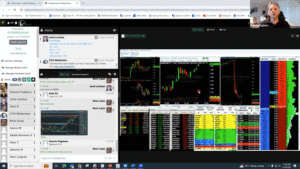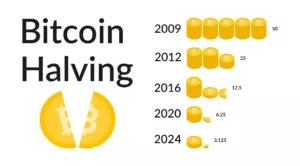How to Trade Low Float Stocks: The Ultimate Guide
Grasping the Concept of Stock Float
The stock float, or the number of shares available for trading, plays a crucial role in making informed trading decisions. It directly impacts a stock's volatility and liquidity, influencing its trading potential. Understanding the stock float is essential for analyzing the supply and demand dynamics of a stock, giving traders valuable insights into its market behavior. Essentially, the stock float is a fundamental factor that guides traders in evaluating the trading potential of a particular stock without the need to introduce the primary keyword.
Distinguishing between Authorized, Outstanding, and Floating Shares
When a company goes public, it designates a specific number of authorized shares, which represents the maximum number of shares that the company is allowed to issue. These shares may or may not be issued to the public for trading on the stock market. On the other hand, outstanding shares encompass all shares held by investors, including company insiders. Floating shares, part of the outstanding shares, are available for trading on the open market, influencing the stock's liquidity and volatility. Distinguishing between authorized, outstanding, and floating shares is crucial for evaluating a stock's trading potential and understanding its behavior in the stock market.
Unraveling Low-Float Stocks
Understanding low-float stocks is crucial in the stock market. These stocks have fewer shares available for public trading, which often leads to higher volatility. Day traders are attracted to low-float stocks due to their potential for significant price movements within a single trading day. The total number of shares and the size of a stock float play a critical role in determining the stock's volatility and potential trading opportunities. Additionally, trading of a particular stock by company insiders or major shareholders can significantly impact its float and subsequent trading activity.
Why Do Low-Float Stocks Catch the Eye of Day Traders?
Low float stocks garner the attention of day traders due to their high volatility. With limited shares and high trading volume, these stocks can experience substantial price spikes, presenting lucrative trading opportunities within short time frames. Day traders aim to capitalize on the potential for quick and significant price movements offered by low float stocks.
The Inherent Volatility of Low-Float Stocks
In the realm of trading stocks, low float stocks stand out due to their inherent volatility arising from their limited supply. This volatility is a result of the ever-changing dynamics of supply and demand in the stock market. The substantial and rapid price movements of low float stocks make them an attractive yet risky option for traders. Understanding and managing the volatility of these stocks are crucial for successful trading. The unpredictable nature of low float stocks necessitates a meticulous analysis and a carefully crafted strategy to navigate the market's fluctuations and achieve favorable results.
The Upside of Trading Low-Float Stocks
Reduced supply and high demand in the stock market make low-float stocks intriguing for trading. With fewer shares available for public trading, price movements can be significant. Often, high volume accompanies these stocks, indicating investor interest. Company insiders and major shareholders owning a big float may lead to increased volatility. Identifying low-float stocks with potential using stock scanners and technical analysis is crucial. While day trading volatile stocks can offer quick gains, the future results are unpredictable. Understanding the upside of trading low-float stocks involves recognizing the influence of stock float size on market capitalization and types of investments.
The Role of Special Purpose Acquisition Companies (SPACs) in Low Float Stocks
After the initial public offering, SPACs can often lead to low float stocks, impacting their trading dynamics. Understanding SPACs is crucial for spotting opportunities in low float stocks, as the merger process can significantly influence their float. This creates trading volatility, making it important to consider the role of SPACs in low float stocks when devising trading strategies. Changes in floating shares due to SPACs can have a direct impact on the stock market, affecting both daily trading and future results.
How Stock Buybacks Influence Low Float Stocks
Stock buybacks have the potential to significantly impact the availability of floating shares for trading in the stock market. This reduction in float resulting from buybacks can directly influence the volatility of low float stocks, making it a crucial factor to consider during trading analysis. Additionally, buybacks have the ability to generate price movements in low float stocks due to changes in supply. Therefore, understanding the influence of stock buybacks on float is essential for evaluating and predicting the trading patterns of low float stocks. Considering the impact of stock buybacks is crucial for anyone involved in trading low float stocks.
Techniques to Identify Low-Float Stocks
Unraveling high volume penny stocks with low float is essential for identifying potential trades. Using stock scanners can help pinpoint these volatile stocks for single day trades. Additionally, analyzing the total number of shares and market capitalization is crucial to spot medium and higher float stocks. Performing technical analysis at the end of the day can aid in recognizing trading opportunities. Approaching identification through pension funds, mutual funds, and major shareholders can provide valuable insights for the general investing public. Understanding the size of a stock float is key to successful identification and future results.
Utilizing Trade Ideas to Scan for Low Float Stocks
When identifying low float stocks with trading potential, trade ideas offer essential tools. Analyzing the supply and demand dynamics is crucial in scanning for such stocks. Utilizing trade ideas helps locate stocks with limited float for trading and screening them with specific criteria and indicators. These tools are instrumental in identifying low float stocks that may experience price volatility, a key aspect of trading low float stocks.
Spotting High Volume Penny Stocks with Low Float
Penny stocks with a limited float are prone to high volatility due to the scarcity of shares. The trading volume of such stocks often surpasses the number of outstanding shares, catching the attention of day traders looking for quick gains. Identifying low float stocks with high relative volume is vital for effective day trading strategies, as high relative volume can signal a potential price breakout
Developing a Strategy to Trade Low-Float Stocks
- Thorough Analysis is Key for Low-Float Stock Trading
- Effect of News Catalysts and Trends on Low-Float Stocks
- Recognizing the Role of Initial Public Offerings (IPOs) in Low-Float Stocks
- Deciphering the Impact of Stock-Based Compensation on Low-Float Stocks
Thorough Analysis is Key for Low Float Stock Trading
Thorough analysis for low float stock trading encompasses technical indicators and daily chart analysis. Successful trading necessitates identifying key factors influencing stock price and recognizing the size of the stock float and float types. To trade low float stocks, due diligence includes assessing the impact of institutional investors and identifying trading opportunities by recognizing the stock’s float size.
Effect of News Catalysts and Trends on Low-Float Stocks
Market trends and news catalysts play a significant role in shaping the trading landscape for low float stocks. The susceptibility of low float stocks to price volatility is heightened by the influence of news catalysts, making it crucial to identify trends and news catalysts for successful trading. However, it's important to note that market trends and news catalysts can also introduce substantial risk into low float stock trading. Therefore, analyzing news catalysts is essential for predicting the price movement of low float stocks, ultimately impacting the trading decisions made in this niche market.
Understanding Risks Associated with Low-Float Stocks
Deciphering the Risks of Low-Float Stocks:
Understanding the effects of Initial Public Offerings (IPOs) on low-float stocks
Assessing the impact of stock-based compensation on low-float stocks
Recognizing the Role of Initial Public Offerings (IPOs) in Low-Float Stocks
Initial public offerings (IPOs) significantly influence a stock's float and trading volume, often leading to low float stocks with reduced liquidity. Understanding IPO impact is crucial for comprehending share price and float of low float stocks. IPOs play a vital role in determining the number of outstanding shares, essential for successful low float stock trading. Recognizing the role of IPOs is key in navigating the complexities of trading low float stocks, analyzing their volatility, and making informed decisions based on market movements and company actions.
Deciphering the Impact of Stock-Based Compensation on Low-Float Stocks
Assessing the stock's float size is crucial for understanding the impact of stock-based compensation on low-float stocks. Stock-based compensation can significantly influence the stock price and trading dynamics of low-float stocks, affecting their float, liquidity, and outstanding shares. Recognizing this impact is essential for traders involved in low-float stock trading, as it can directly impact future results and the trading of a particular stock. By deciphering the implications of stock-based compensation, traders can make more informed decisions when navigating the volatile stocks market.
Frequently Asked Questions
How Significant is a Stock's Float for Day Trading?
Understanding the importance of a stock's float is crucial for day traders. Low float stocks tend to exhibit higher volatility and larger price movements, offering both risks and potential rewards. Day traders should conduct thorough research and exercise caution when trading low float stocks to maximize their chances of success.
What is considered low float number?
A low float number refers to the number of shares available for trading in a particular stock. Generally, a low float number is considered to be around 10 million shares or less. However, it's important to note that what is considered a "good" low float number can vary depending on the specific circumstances and goals of investors. Some traders may prefer stocks with extremely low floats, as they can potentially experience more significant price movements due to limited supply and high demand. Others may prefer stocks with slightly higher floats for increased liquidity and stability. Ultimately, determining a "good" low float number will depend on your individual investment strategy and risk tolerance
Conclusion
In conclusion, trading low-float stocks can be a lucrative strategy for experienced day traders. The limited supply of shares combined with the high volatility can lead to significant price movements and potential profits. However, it is important to remember that trading low-float stocks also carries a higher level of risk. It requires thorough analysis, careful consideration of news catalysts and trends, and the ability to recognize and manage the associated risks. Developing a well-defined strategy and staying informed about the latest market developments are crucial in successfully trading low-float stocks. By understanding the concept of stock float, identifying potential opportunities, and managing risks effectively, traders can navigate this specialized market and potentially achieve success. Happy trading!
To learn more about Day Trading Low Float Stocks click here to register for my next weekly class!
Wishing you all profitable trades and success in your endeavors.
See you tomorrow in my CyberGroup Live Trading room (Open Monday thru Friday from 7:45am - 4:30pm EST)
If you aren't already a member, you can sign up today at https://ctu.co/trial
Happy Trading,
Fausto Pugliese
Founder & CEO
Cyber Trading University




